Creekside Village Pollinator Garden
BACK TO FULL TOUR
Garden Features
Drought Tolerant
California Natives
Deer Resistant
Drip Irrigation
Pesticide Free
Reclaimed/Recycled Materials
Lawn-Free Landscaping
Wildlife Habitat
Nature Viewing
Partner: City of Sonoma
The Creekside Village Pollinator Garden is the realized vision of three members of the Creekside Village’s Landscape Committee. Inspired by the increasing number of native plant gardens in the Bay Area, and with infrastructure support from the HOA, we created a flower-filled habitat garden for wildlife on a neglected site next to a frequently used path. The design, installation, and purchase of plants, as well as maintenance, are all done by volunteers. An in-line drip irrigation system is used throughout 75% of the garden The plants include California natives and other low water use varieties. Quail and other birds frequent the garden as do many bee and butterfly pollinators.
This spring marks the fourth year of the garden and we have enjoying watching it develop over time and through the seasons. Some of our favorite plants are the mahogany poppies and Indian blankets in early spring; the cupheas, catmints, salvias, and bee balm in the summer; and the 10-foot-tall Maximillian sunflowers in the fall. The residents of Creekside Village enjoy the tranquility of the garden and watching the wildlife it attracts.
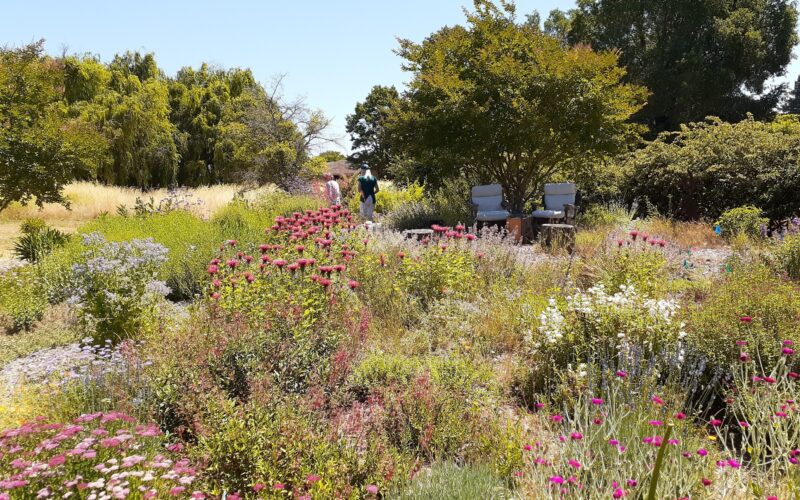
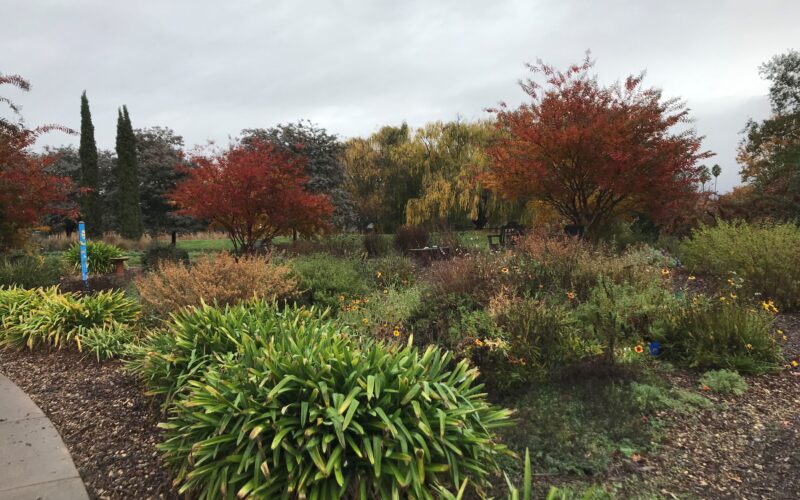
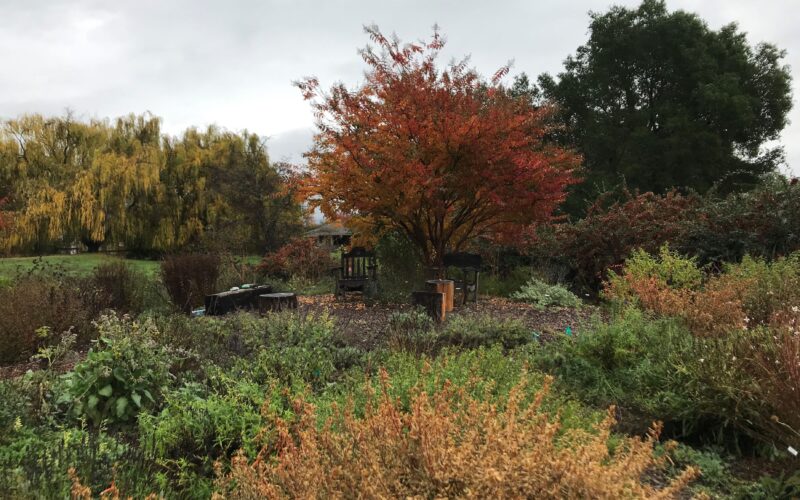
Plants in this Garden
-
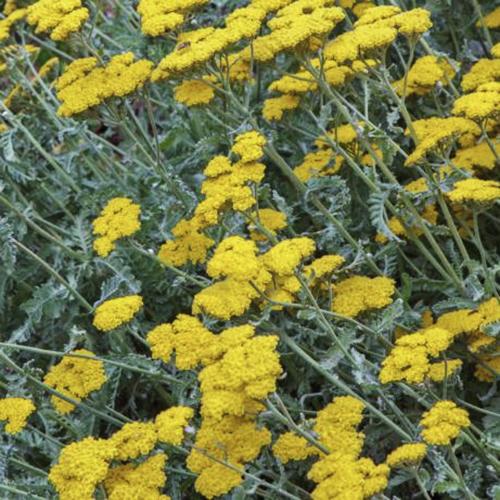
Achillea spp & cvs Yarrow
-
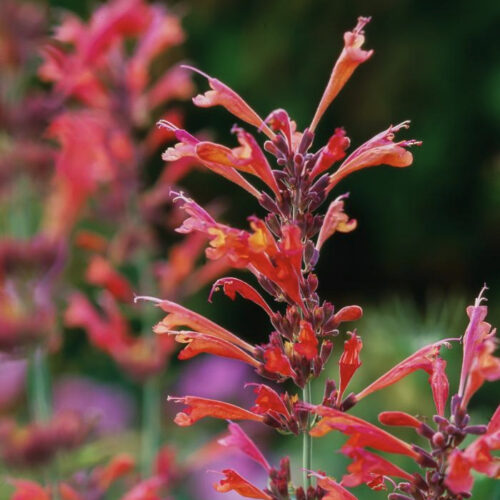
Agastache spp Hyssop, Licorice Mint
-
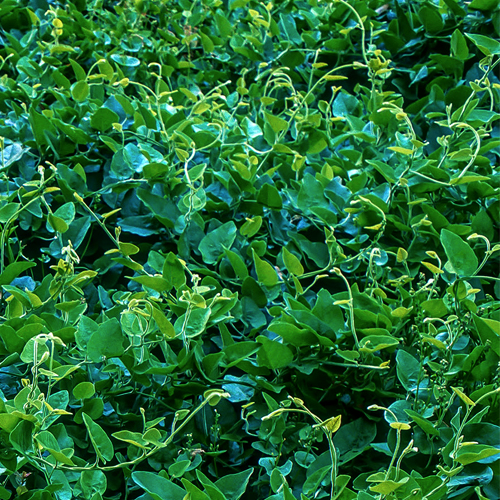
Aristolochia californica California Pipevine
-
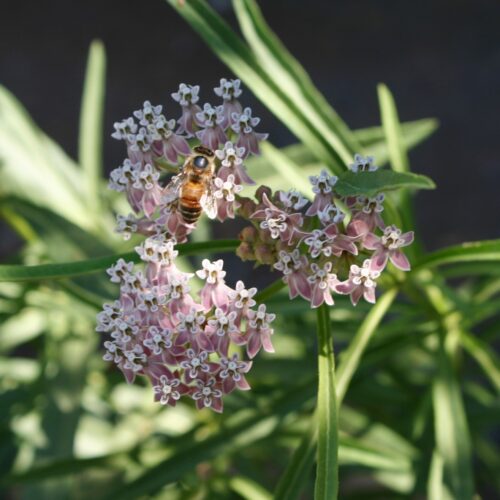
Asclepias spp Milkweed
-
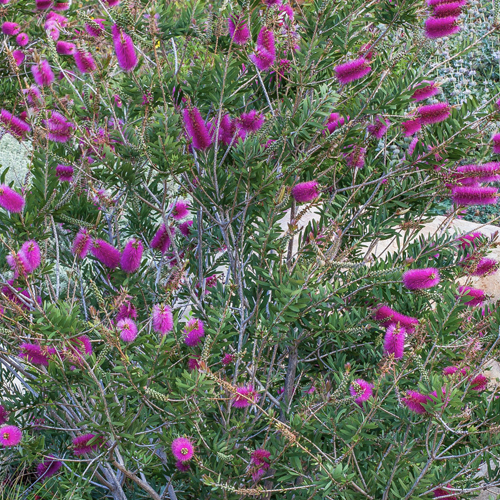
Callistemon spp & cvs Bottlebrush
-
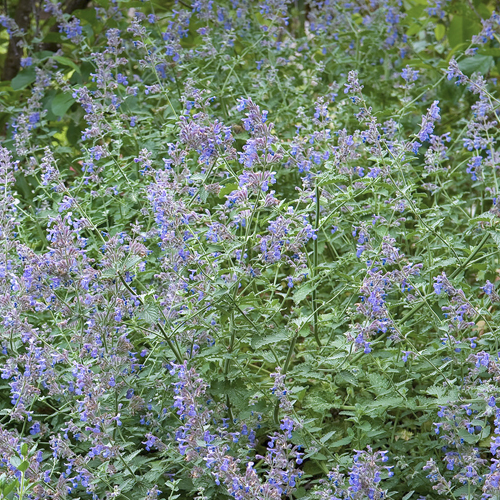
Nepeta spp Catmint, Catnip
-
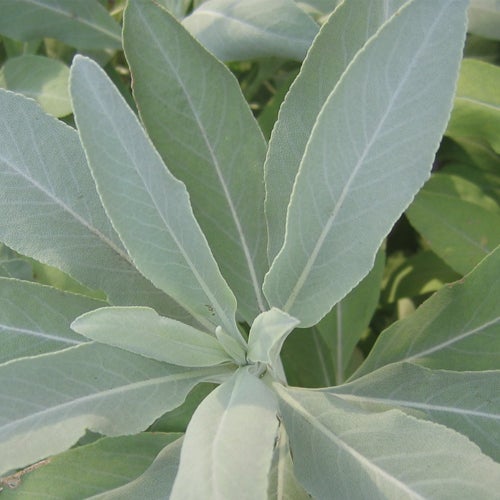
Salvia spp Sage
-
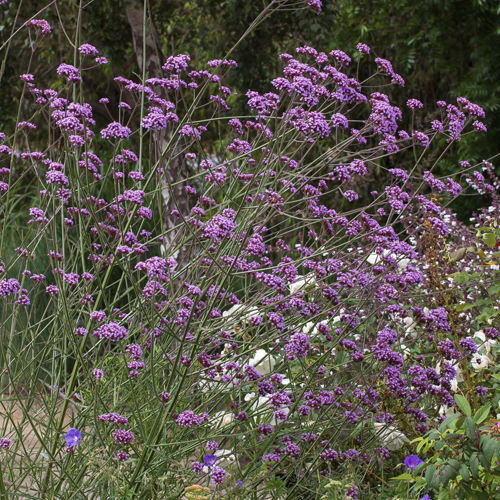
Verbena spp Verbena
-
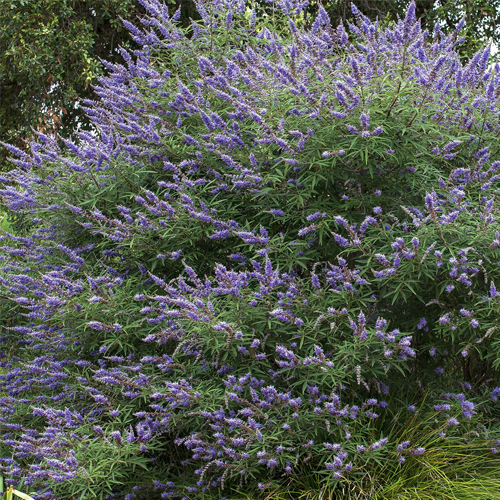
Vitex agnus-castus Chaste Tree
-
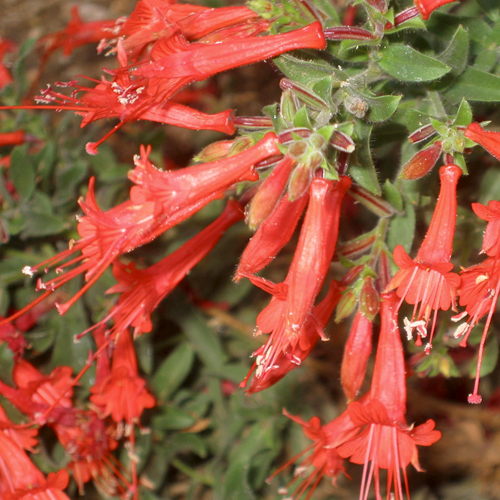
Zauschneria [Epilobium] spp California Fuchsia
-
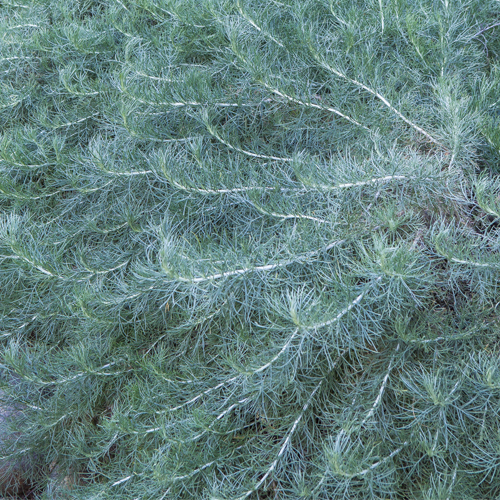
Artemisia ssp Sagebrush, Wormwood
-
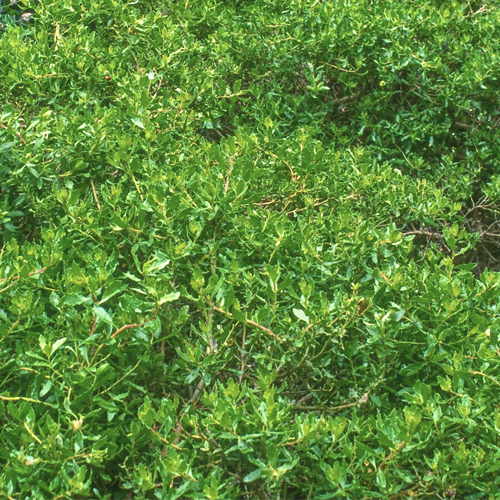
Baccharis pilularis & cvs Dwarf Coyote Bush
-
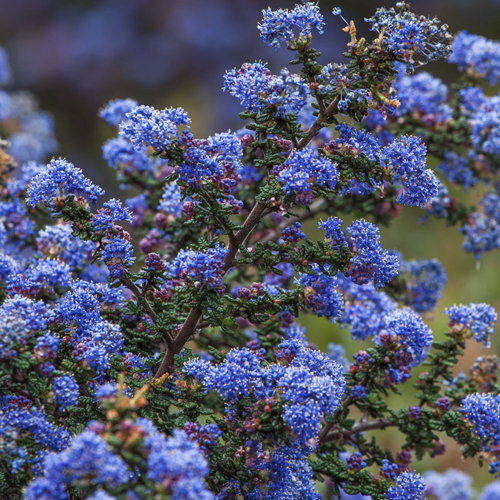
Ceanothus spp & cvs Ceanothus
-
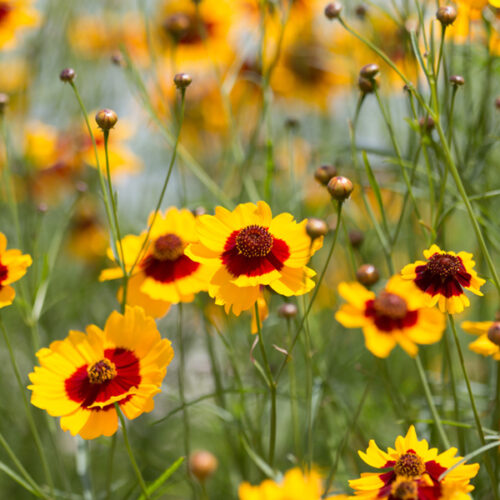
Coreopsis Lanceolata Lanceleaf Coreopsis
-
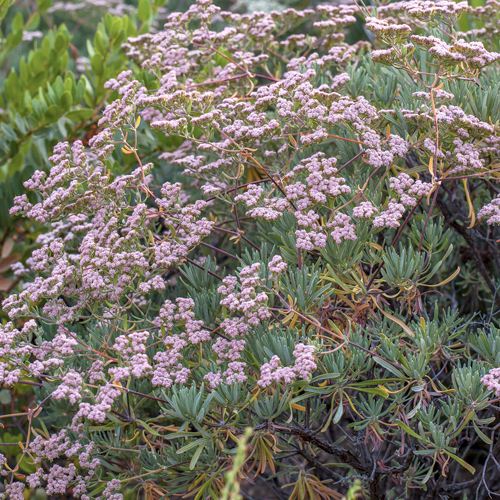
Eriogonum spp Buckwheat
-
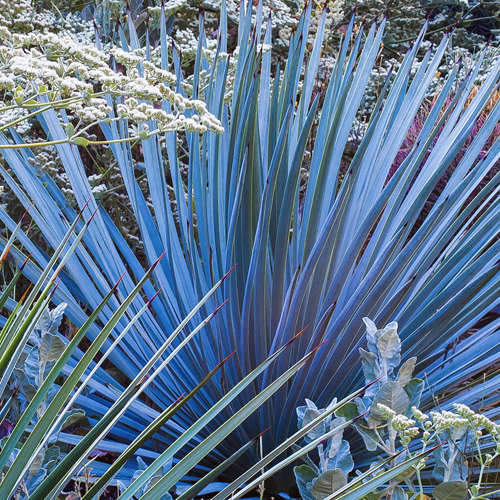
Yucca spp Yucca
-
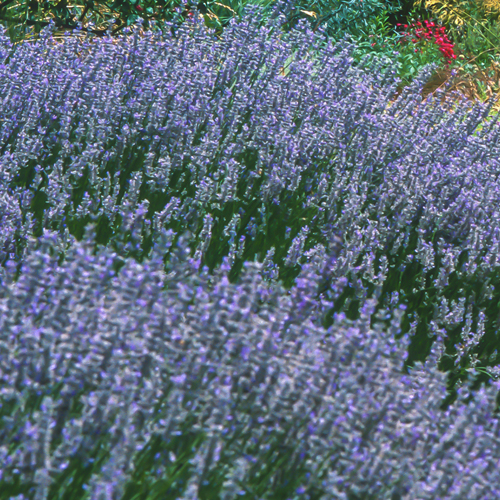
Lavandula spp Lavender
-
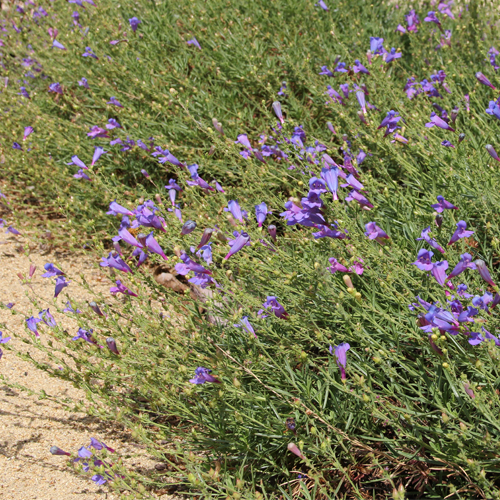
Penstemon heterophyllus Blue Foothill Penstemon, California Penstemon
-
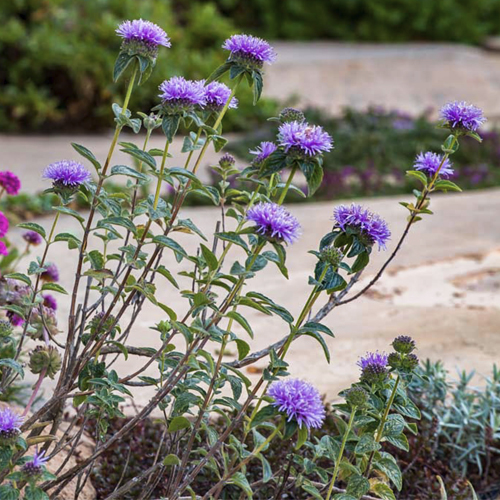
Monardella villosa Coyote Mint
-
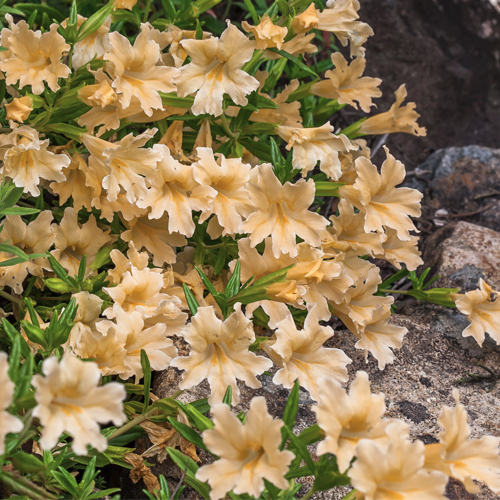
Mimulus aurantiacus and hybrids Sticky Monkey Flower
-
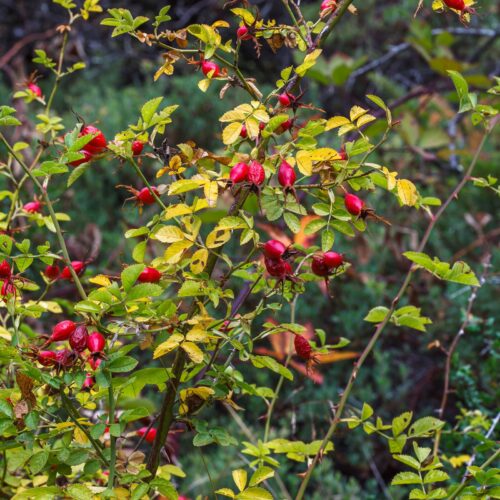
Rosa californica California Wild Rose
-
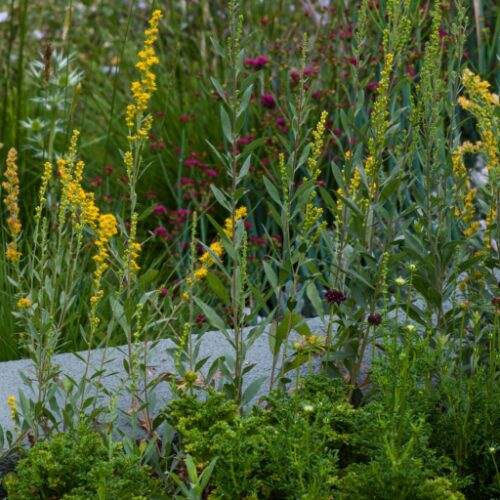
Solidago velutina californica California Goldenrod
-
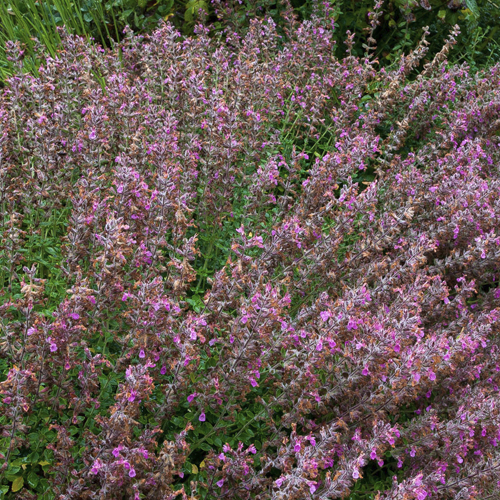
Teucrium spp Germander

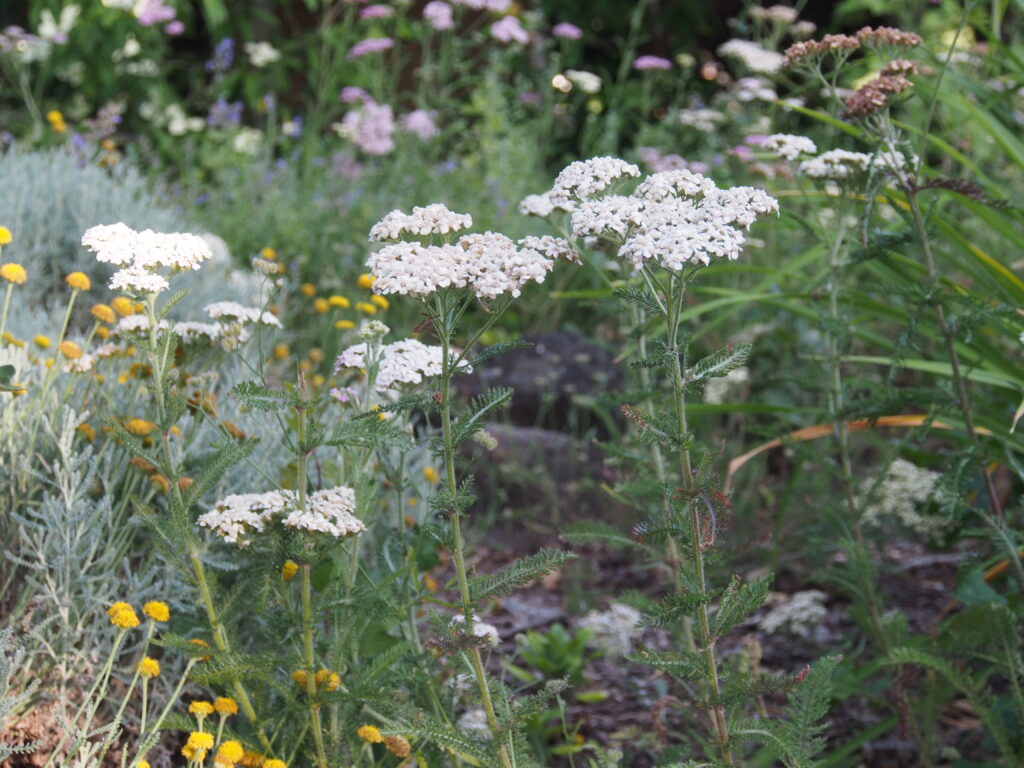
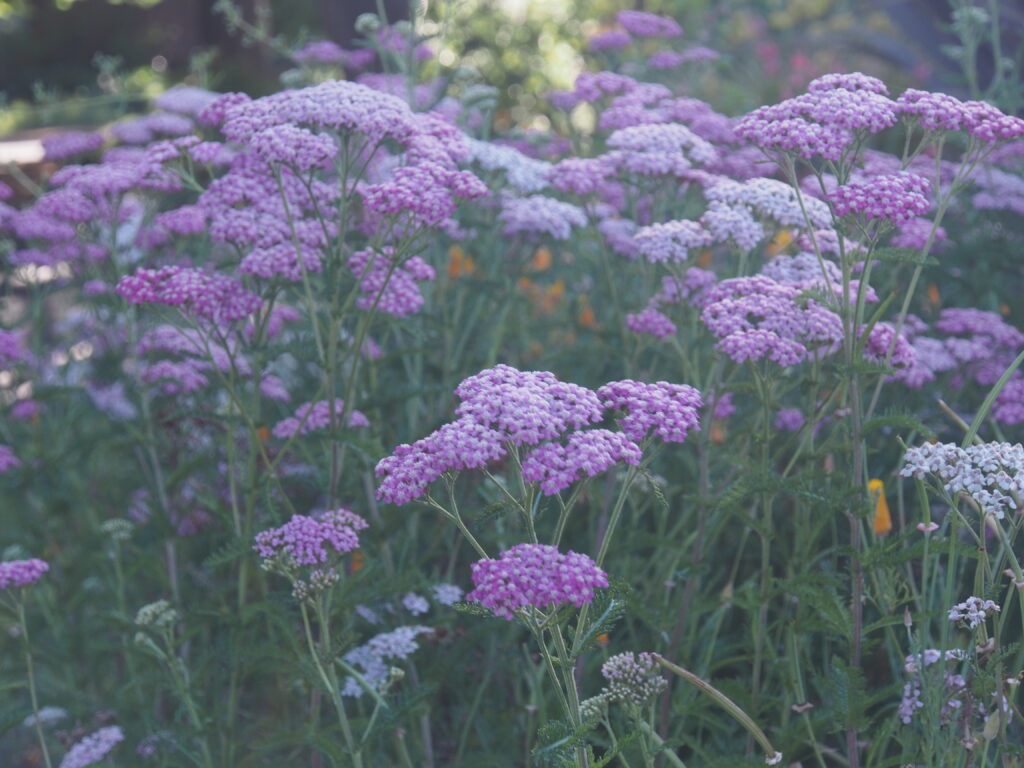
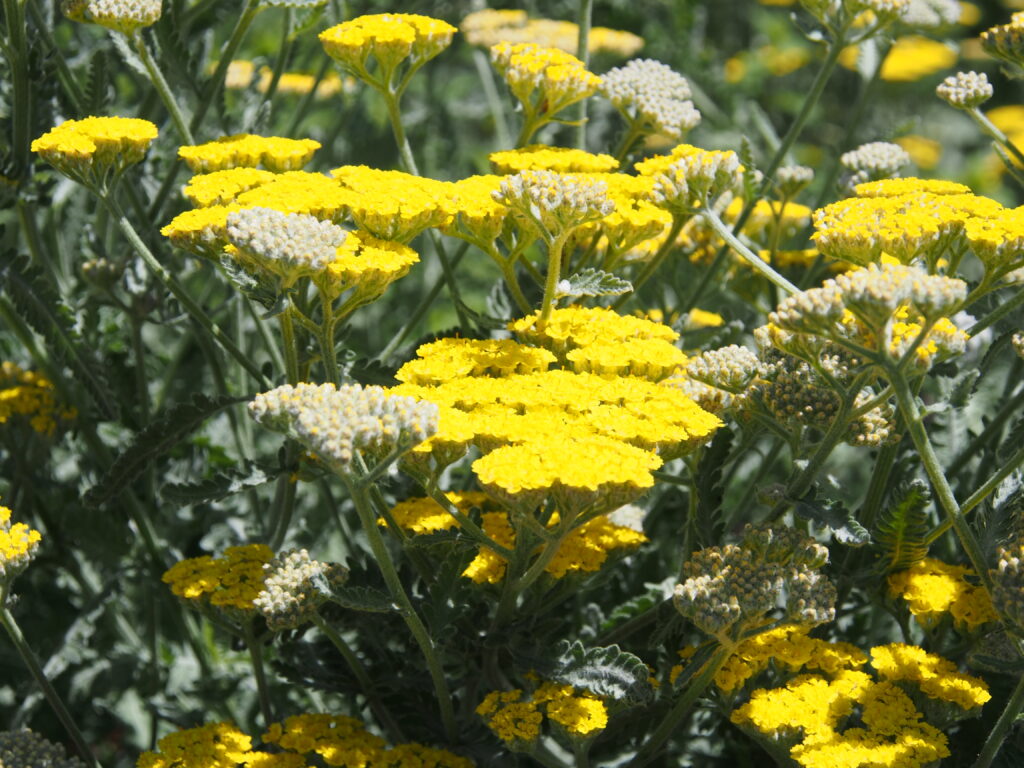
Yarrows are variable low-growing, spreading herbaceous perennials with finely divided leaves that inhabit many temperate regions in the Northern Hemisphere. Flattish clusters of flowers form in spring and well into summer and provide an important nectar source for pollinators and insects. Yarrow can help to stabilize slopes and is a good addition to the upper level of rain gardens and swales. Colors include yellow, pink, and red.
California native spp & cvs: A. millefolium (common yarrow), A. m. ‘Calistoga’, A. m. ‘Island Pink’, A. m. ‘Sonoma Coast’, A. m. ‘Terracotta’.
Other yarrows: A. filipendulina (fern leaf yarrow), A. f. ‘Coronation Gold’, A. ‘Moonshine’, A. tomentosa (woolly yarrow).
- Water: Low
- Light: Full SunPartial Shade
- Soil: Most Soils
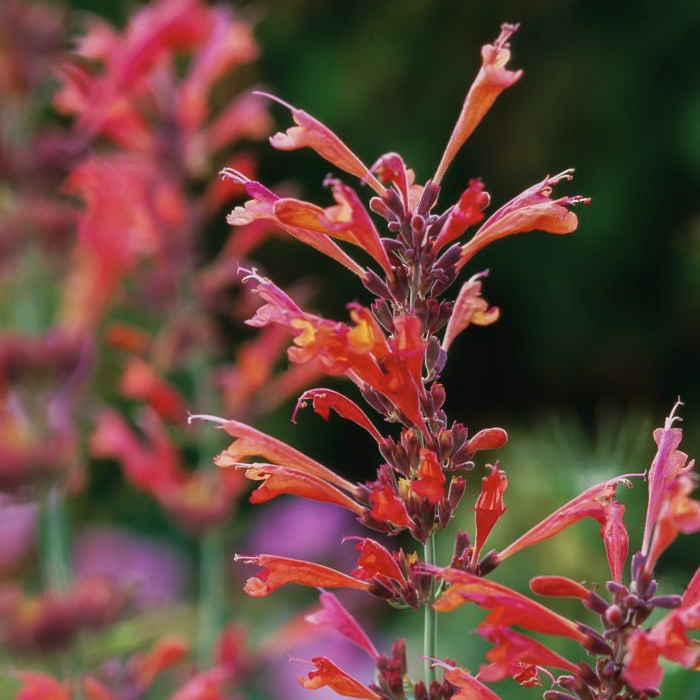
Shrubby perennial in the mint family with aromatic gray-green leaves from southern Arizona and northern Mexico. Tubular orange and lavender flowers from midsummer to fall. Can be short-lived in clay soils.
- Water: Low
- Light: Full SunPartial Shade
- Soil: Well Drained

Important northern California native habitat plant that is the sole larval food source for the pipevine swallowtail butterfly. This deciduous vine grows naturally along stream banks and in woodlands and performs well under native oaks. Dutchman’s pipevine is relatively slow-growing and takes a few years to establish. Pendulous pipe-shaped flowers bloom in early spring, followed by soft, bright green, heart-shaped leaves. Best grown as a groundcover to provide protection for pipevine swallowtail larvae but will also twine up other plants and structures. The real show comes in late spring as larvae feed on the plant and grow into spectacular horned, black caterpillars with red spots!
- Water: Low
- Light: Partial ShadeShade
- Soil: Most Soils
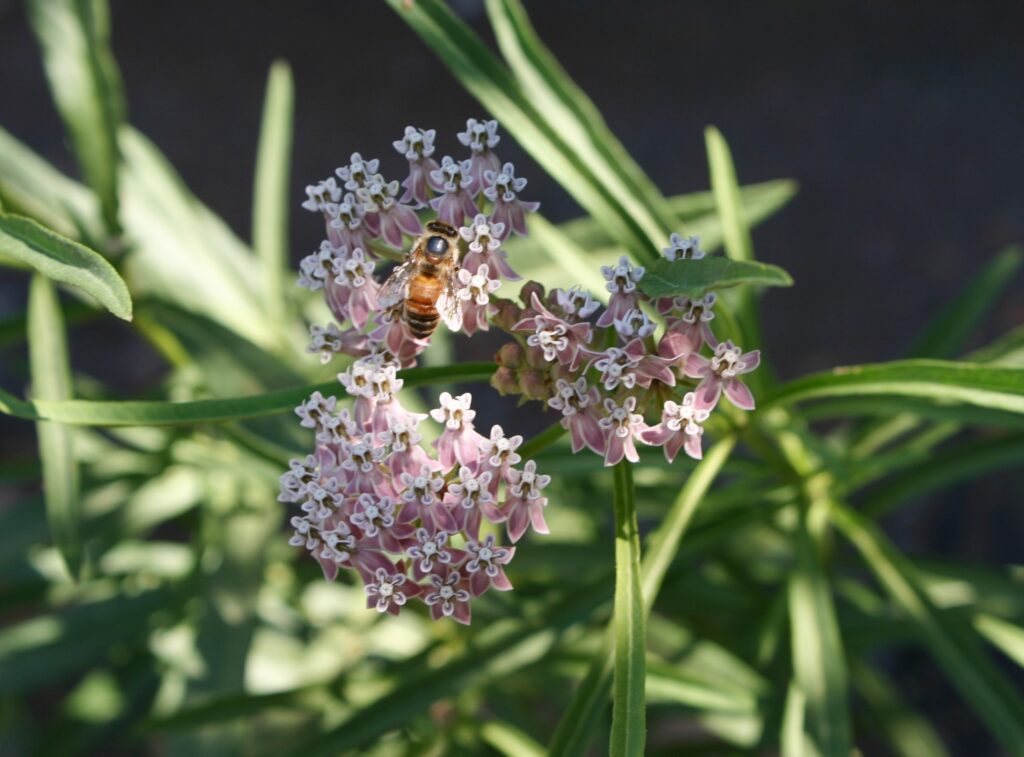
Colony-forming, herbaceous perennials with several species providing important habitat and larval food sources for the monarch butterfly while attracting a diverse array of insects.
California milkweeds remain dormant during the colder months. Stems that emerge in April or May bear clusters of small, star-like flowers in summer followed by silky-tailed seeds that are dispersed by wind. A. fascicularis (narrow-leaved milkweed, 1-3’) is the preferred food source for monarch larvae. A. speciosa (showy milkweed, 2-4’) has larger, soft foliage, showier flower clusters, and is also a food source for monarch larvae. A. cordifolia (heart leaf milkweed, 1-2′) has heart-shaped leaves and is also a food source for monarch larvae.
- Water: Low
- Light: Full SunPartial Shade
- Soil: Most Soils

Popular Australian evergreen shrub or small tree attractive to hummingbirds, butterflies, and bees typically for bright red flowers that resemble a bottle brush. Flowering begins in spring and continues into fall. Bottlebrush will tolerate many garden conditions and exposures and is tolerant of dry conditions once established. Shrub varieties can be pruned to an informal hedge or be left to show their natural shape.
Examples: Lemon bottlebrush (C. citrinus, 6-12’ x 8-12’) is the most commonly grown species in California. Weeping bottlebrush (C. viminalis, 20’ x 15’) has pendulous branches. C. viminalis ‘Little John’ (3-5’ x 4-6’) is a low-growing, mounding form with deep red flowers that is popular as a foundation or accent plant.
- Water: Low
- Light: Full SunPartial Shade
- Soil: Well Drained

Low-growing, flowering perennial from the mint family that produces many spikes of lavender flowers in the summer that are attractive to bees, butterflies, and hummingbirds. Soft, gray-green, aromatic foliage is attractive to cats. Nepeta species seed freely and may become invasive. Nepeta x faassenii is a sterile hybrid that is widely available and grows well in Northern California gardens. Available cultivars have flowers ranging from deep blue to white.
- Water: Low
- Light: Full SunPartial Shade
- Soil: Most Soils

Salvias are a huge group of more than 900 species that include annuals, perennials, and shrubs adapted to a variety of climates and have varying water requirements. Salvias are attractive to hummingbirds, butterflies, and bees, and are generally ignored by deer. Sages that are native to California are generally drought-tolerant, prefer full sun, and little to no fertilizer. Annual pruning in late summer or fall generally helps to keep plants tidy and healthy.
CA native sages:
- S. apiana, white sage (3-4’ x 4-6’), silvery-white, aromatic leaves with tall flower spikes of white flowers, popular for honey production and in bundles as a natural incense.
- ‘Bee’s Bliss’ (1-2’ x 6-8’), superb, light gray groundcover with light purple flowers on long spikes; damp conditions can cause mildew which will clear with warm weather and sunny conditions.
- S. clevelandii, Cleveland sage (3-5’ x 3-5’), medium-sized shrub for hot, dry locations known for pleasant fragrance and deep blue whorls of flowers; popular cultivars include S. c. ‘Allen Chickering’, S. c. ‘Pozo Blue’, and S. c. ‘Winnifred Gilman’.
- S. leucophylla, purple sage, includes plants with both an upright growth habit, such as S. l. ‘Amethyst Bluff’ (3-5’ x 3-5’) and others with a sprawling form, such as S. l. ‘Point Sal’ (2-3’ x 6’), both of which are from Santa Barbara county.
- S. sonomaensis, Sonoma sage (1-2’ x 3-4’), groundcover that prefers light shade and will not tolerate damp conditions; cultivars include S. s. ‘Dara’s Choice’, S. s. ‘Greenberg Gray’, and S. s. ‘Hobbit Toes’.
- S. spathacaea, hummingbird sage (1-2’ spreading), herbaceous groundcover that grows well in dry shade and spreads slowly by underground rhizomes; large leaves have a wonderful fruity fragrance; the only red-flowered native sage.
- S. mellifera, black sage (6′ x 10′), evergreen shrub that grows well in full sun and well drained soils. Dark green leaves with pale purple flowers in late spring and early summer.
Non-native sages:
- S. chamaedryoides, germander sage (2-3’)
- S. chiapensis, Chiapas sage (1-2’ x 3-4’)
- S. greggii, autumn sage (1-4’ x 1-4’)
- S. leucantha, Mexican bush sage (3-4’ x 3-6’)
- S. microphylla, cherry sage (3-4’ x 3-6’)
- S. officinalis, garden sage (1-3’ x 1-3’)
- Water: Very LowLowModerate
- Light: Full SunPartial Shade
- Soil: Well Drained

Fast-growing perennials that thrive in hot locations and produce clusters of small, showy flowers in summer.
Examples:
- V. bonariensis (3-6’ x 2-3’) is an upright perennial from South America with long, airy flower stalks. Reseeds readily and should not be planted near riparian areas where it can be invasive.
- Garden verbena (V. x hybrida, 6-12” x 2-3’) is a popular and showy groundcover available in many colors.
- Cedros Island verbena (V. lilacina ‘De La Mina’, 1-2’ x 2-3’) from the Cedros Island off the coast of Baja California is a popular native for its deep purple flower color and uniform growth habit.
- Water: Very LowLow
- Light: Full Sun
- Soil: Well Drained

Attractive deciduous shrub or small tree from the Mediterranean region to central Asia that produces spikes of fragrant lavender-blue flowers in summer into fall. Several varieties provide white or pink flowers.
- Water: Low
- Light: Full Sun
- Soil: Well Drained

Group of highly variable, semi-evergreen subshrubs and herbaceous perennials distributed over a wide geographic area, including California. Epilobiums bloom in late summer with tubular flowers providing a food source for hummingbirds migrating south and are also attractive to bees and butterflies. Epilobiums range from low-growing groundcovers to upright plants of several feet. Flower colors include orange-red, white, pink, and salmon. Most can be pruned back in late autumn to maintain a more compact form and be rejuvenated for the following year.
Low-growing examples: E. ‘Schieffelin’s Choice’; E. canum ‘Calistoga’, a selection from Phil Van Soelen from California Flora Nursery from the Palisades east of Calistoga; E. canum ‘Cloverdale’, a selection from U.C. Santa Cruz Arboretum from along the Russian River north of Cloverdale with exceptionally orange flowers; E. c. ‘Everett’s Choice’, E. c. ‘Summer Snow’ with white flowers, and E. septentrionale ‘Select Mattole’, a somewhat redder flowering selection that is more shade-tolerant.
Upright examples: E. c. ‘Bowman’s Hybrid’ (2-3’), E. c. ‘Catalina’ (3-4’), E. c. ‘Liz’s Choice’ (3’) selected by Milo Baker Chapter CNPS Fellow Liz Parsons, E. c. ‘Marin Pink’ (2’) with pink flowers.
- Water: Low
- Light: Full Sun
- Soil: Well Drained

Large group of plants that includes annuals, perennials, and shrubs grown for fine, soft-textured, aromatic, gray-green foliage. Flowers are inconspicuous but provide a source of pollen, nectar, and seeds for wildlife. Shrubby varieties can be cut back to maintain a more tidy and compact appearance. Perennial varieties can be divided in fall or early spring. Excellent choice as support for more showy plants in the garden.
Examples: A. ‘Powis Castle’ (3’ x 6’), A. californica (2-5’ x 4-5’, low-growing cultivars ‘Canyon Gray’ and ‘Montara’), A. pycnocephala ‘David’s Choice’ (6” x 2’).
- Water: Very LowLow
- Light: Full Sun
- Soil: Most Soils

Flowers are inconspicuous but provide a source of pollen, nectar, and seeds for wildlife. Shrubby varieties can be cut back to maintain a more tidy and compact appearance. Perennial varieties can be divided in fall or early spring. Excellent choice as support for more showy plants in the garden.
- Water: Low
- Light: Full Sun
- Soil: Most Soils

Ceanothus is a group of fast-growing, evergreen shrubs that vary from groundcovers to small trees, many of which are native to California. They provide a spectacular display of flowers in spring that will attract a multitude of pollinators. Flowers are followed by seeds that provide food for birds. The clusters of tiny flowers range from white to deep violet. Plants perform best with good drainage and minimal irrigation once established. Some do best in cooler coastal climates, but many thrive in hotter inland climates. Pay close attention to the mature size when selecting ceanothus to ensure that it has sufficient space for its natural form.
Groundcovers: C. ‘Centennial’ (1’ x 8’), C. gloriosus var. gloriosus ‘Anchor Bay’ (2’ x 8’), C. griseus var. horizontalis ‘Diamond Heights’ (variegated, 1’ x 4’), C. griseus var. horizontalis ‘Yankee Point’ (3’ x 12’), C. maritimus (2’ x 6’).
Shrubs: C. ‘Blue Jeans’ (6’ x 6’), C. Concha (6’ x 6’), C. ‘Dark Star’ (6’ x 8’), C. ‘Joyce Coulter’ (4’ x 12’), C. ‘Julia Phelps’ (8’ x 10’), C. cuneatus (8’ x 8’), C. thyrsiflorus ‘Skylark’ (4’ x 6’).
Large shrubs: C. ‘Frosty Blue’ (10’ x 12’), C. thyrsiflorus (20’ x 20’), C. t. ‘Snow Flurry’ (white flower, 20’ x 20’).
Trees: C. ‘Ray Hartman’ (15′ x 15′)
- Water: Very LowLow
- Light: Full SunPartial Shade
- Soil: Well Drained
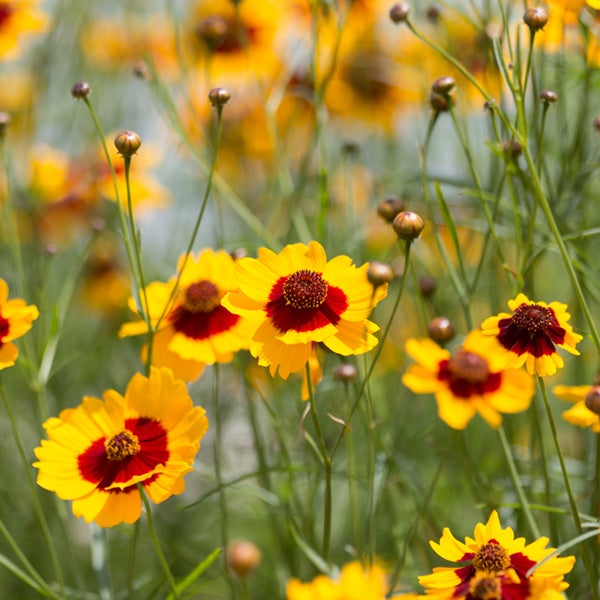
Large group of annual and perennial plants that produce a vivid display of yellow-to-orange flowers in full sun to part shade. Many cultivars are available from local nurseries. C. lanceolata (lanceleaf tickseed), C. rosea (pink tickseed), and C. verticillata (threadleaf coreopsis) have lower water needs than other species and are likely to be more successful in hot, dry areas.
- Water: Low
- Light: Full SunPartial Shade
- Soil: Most Soils

Diverse group of flowering, evergreen shrubs and perennials and annuals found throughout the western United States. Most available in nurseries are native to California and generally prefer drier sites. Flowers colors include yellow, white, pink, and red and are held above foliage in umbels that dry over time and are popular in flower arrangements. Buckwheats provide pollen and nectar for bees and butterflies, larval food for butterflies, seeds for birds, and cover for many creatures.
Examples:
- Santa Cruz Island buckwheat (E. arborescens, 3-4’ x 4-5’) densely mounded with white flowers.
- Saffron buckwheat (E. crocatum, 1-2’ x 2-3’) with chartreuse-yellow flowers and pale leaves.
- California buckwheat (E. fasciculatum, 2-3’ x 3’) and its low-growing cultivars such as E. f. ‘Warriner Lytle.’
- Catherine’s lace (E. giganteum, 4-8’ x 6-10’) with delicate, white flowers and soft pale leaves.
- Red-flowered buckwheat (E. grande var. Rubescens, 1-2’ x 2-3’) low-mounding perennial with rose-pink flowers, coastal bluff buckwheat (E. latifolium, up to 12” x 1-2’.)
- Sulfur buckwheat (E. umbellatum, 6-18” x 1-3’) with intense yellow flowers and cultivars E. u. var. aureum ‘Kannah Creek’ and E. u. Var. ‘Shasta Sulphur’.
- Water: Very LowLow
- Light: Full SunPartial Shade
- Soil: Well Drained

Evergreen shrubs and perennials that grow over much of North America and feature sword-shaped leaves. Yuccas typically produce flowers on tall stalks in spring. Some yuccas are stemless while others have trunks and grow to tree size.
Examples: Banana yucca (Y. baccata, 3-4’ x 4-5’) eventually forms a short trunk. Adam’s needle (Y. filamentosa, 2-3’ x 4’) has loose fibers at the edge of leaves. Others are Spanish dagger (Y. gloriosa, 10’ x 8’), beaked yucca (Y. rostrata, 12-15’), and our Lord’s candle (Y. whipplei, 2-4’ x 3-6’), native to Southern California and Baja California.
- Water: Very LowLow
- Light: Full SunPartial Shade
- Soil: Well Drained

Classic, aromatic, small, Mediterranean evergreen shrub that works well in a mass or mixed planting in a sunny location with good drainage. Blue-to-purple flowers are attractive to bees and butterflies, and seeds provide food to birds. Shear plants by one-third to one-half after flowering to maintain a neat appearance. Vulnerable to root rot in damp locations or if organic mulch is too close to plant crown.
Examples: English lavender (L. angustifolia, 1-2’ x 2-3’) and many cultivars, French Lavender (L. dentata, 3-4’ x 4-6’), hedge lavender (L. x intermedia, 1-2’ x 2-3’), Spanish lavender (L. stoechas, 2-3’ x 2-3’) featuring large and showy bracts on top of flower spikes.
- Water: Low
- Light: Full Sun
- Soil: Well Drained

Penstemons are a large group of woody or herbaceous perennials with narrow leaves and tubular flowers. Foothill penstemon is a widely known and grown California native with iridescent purple-blue flowers during spring and early summer that are attractive to hummingbirds. The cultivar known as ‘Margarita BOP’ is widely available, reliable, and garden- tolerant. Remove spent flower spikes to encourage more flowers.
- Water: Low
- Light: Full SunPartial Shade
- Soil: Well Drained

Coyote Mint is a compact perennial or sub-shrub with aromatic foliage and a sprawling habit. Dense heads of purple flowers form in spring-to-summer that are attractive to butterflies and other insects. The low-growth habit of coyote mint makes it an excellent choice for the front of a border, along the edge of a path, or beneath larger shrubs such as manzanita or ceanothus. Monardella villosa spp. franciscana ‘Russian River’ and Monardella villosa spp. villosa ‘Mark West’ are available selections from Sonoma County.
- Water: Very Low
- Light: Full Sun
- Soil: Most Soils

The orange, tubular flowers of sticky monkey flower can be enjoyed in many locations throughout Sonoma and Marin counties in spring and summer, a testament to how well this plant is adapted to hot and dry conditions. The slightly sticky leaves benefit from light pinching and pruning to maintain an attractive appearance and support for the beautiful flowers. Many hybrids provide color variation. Do not confuse this plant with the red-flowered scarlet monkey flower (Mimulus cardinalis), an herbaceous riparian plant that requires regular water to thrive.
- Water: Very Low
- Light: Full SunPartial Shade
- Soil: Sandy
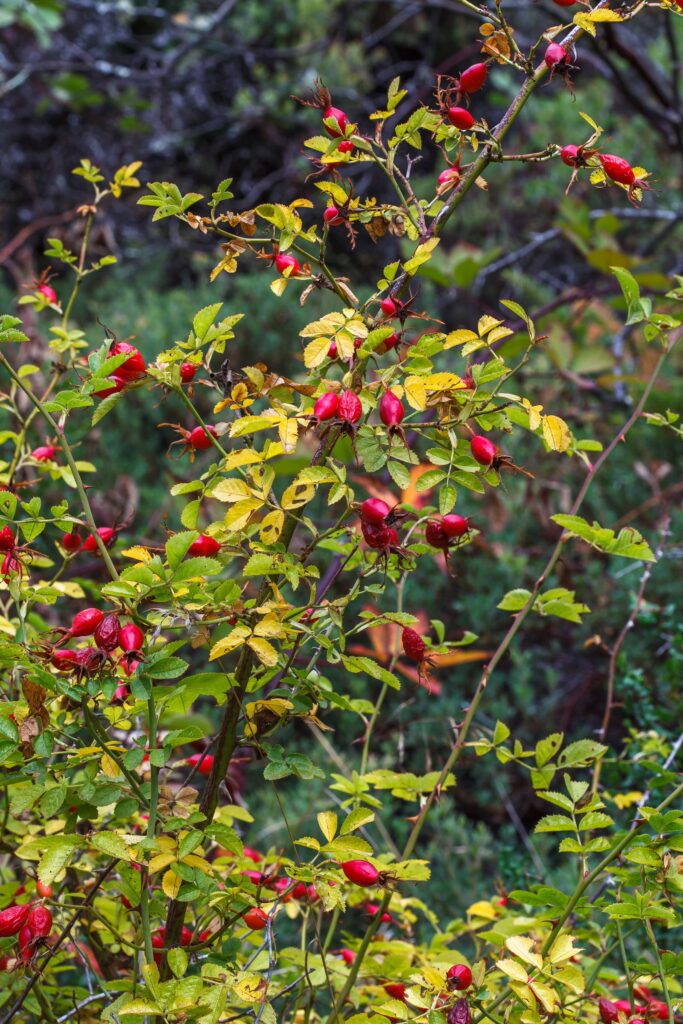
A native, perennial, deciduous shrub with dark green leaves divided into coarsely toothed leaflets. Rose to pink colored flowers containing yellow seeds and grows abundantly in moist soils. Natural habitat for birds and pollinator insects.
- Water: Low
- Light: Full SunPartial Shade
- Soil: Loam
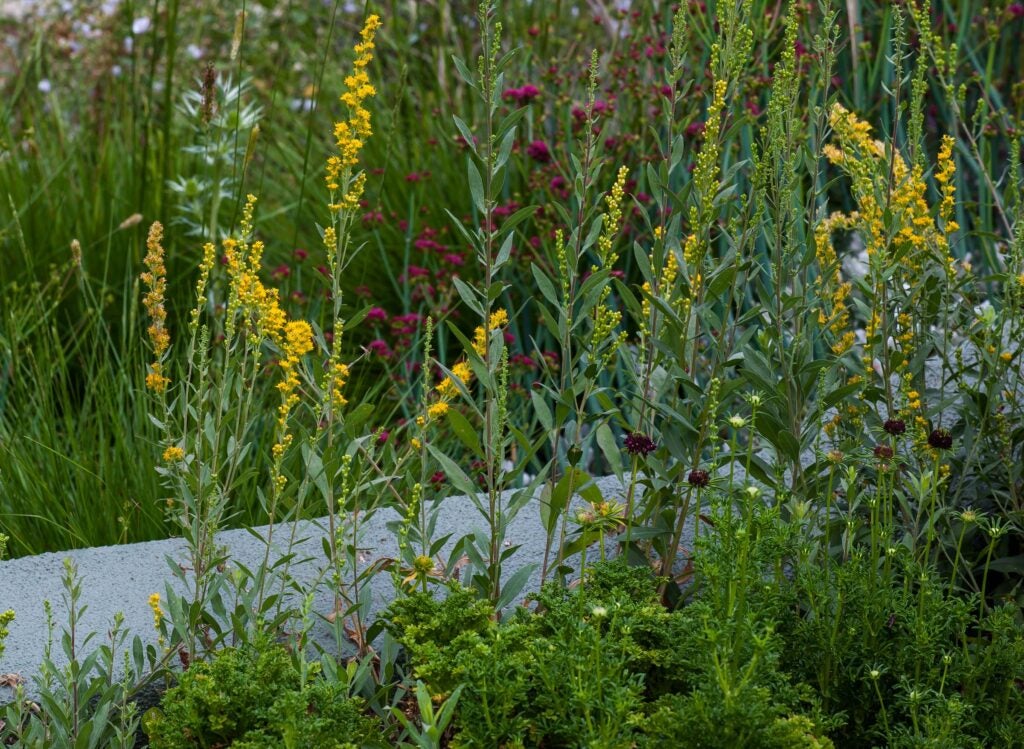
California native perennial herb with oval shaped, gray-green leaves. Yellow flowers will appear in the summer and early fall. Natural habitat for birds and pollinating insects and tolerates a wide variety of soils.
- Water: Moderate
- Light: Full SunPartial Shade
- Soil: Most Soils

Mediterranean, flowering, shrubby perennials with aromatic foliage.
- Wall germander (T. chamaedrys [x lucidrys], 1’ x 2’) is a popular groundcover with upright stems, dark green leaves, and red-purple or white flowers in summer.
- Majorcan germander (T. cossonii [majoricum], 6” x 2’) is a creeping perennial that produces a profusion of rosy purple flowers in mid-to-late spring.
- Bush germander (T. fruticans, 4-8’ x 4-8’) has silvery foliage and bears lavender-blue flower spikes from winter to spring and sporadically throughout the year.
- Water: Very LowLow
- Light: Full Sun
- Soil: Well Drained